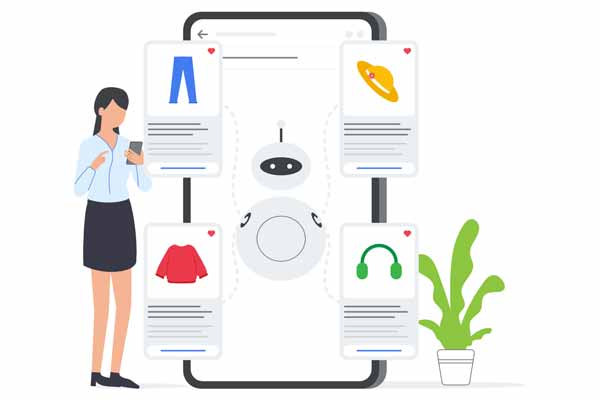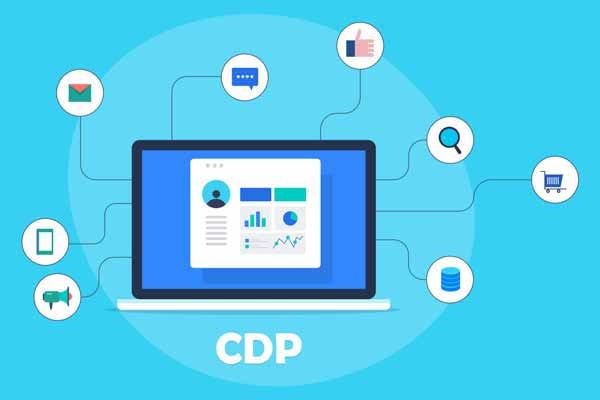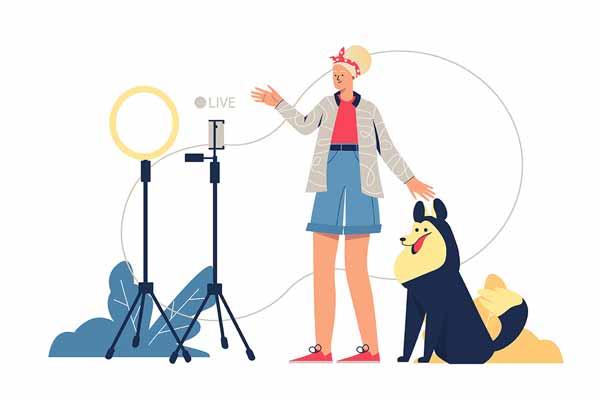Introduction
2023 proved to be a pivotal year for the marketing industry.
Especially so for Martech.
Driven by the post-pandemic recovery of the global economy and the acceleration of digitalization, many noteworthy advancements emerged.
These opened the doors for more innovation in 2024.
But the year 2023 wasn’t without its problems.
Small and medium businesses faced significant challenges due to fragmented customer journeys across channels and devices, increasing prices, and increased competition from digital-native firms.
E-Commerce and retail businesses that neglected to leverage social commerce struggled to engage audiences and increase sales.
As we enter 2024, small and medium businesses must learn from the past year and prepare to leverage new capabilities that align with customer needs.
I’ll start with a recap of 2023, followed by some thoughts about marketing in 2024.
Let’s jump right in.
SMB Marketing in 2023 Recap: Key Trends and Takeaways
The Rise of Generative AI
Due to budget or resource constraints, the ability to generate high volumes of marketing content, ads, and assets has traditionally been difficult for SMBs.
Enter Generative AI.
Tools like DALL-E 2 allowed brands to create product images quickly.
Systems like ChatGPT, Claude.ai, Copy.ai, and Jasper.ai empowered even the smallest brands to write blog posts, generate dozens of ad variants, develop marketing campaigns, optimize SEO content, and do much more.
This opened new creative possibilities.
For example, a leading supplement brand used DALL-E 2 to design hundreds of new label ideas in a range of styles, allowing for more personalized marketing.
Operational AI
Operational AI helps automate and enhance business processes and operations by improving efficiency, reducing costs, and increasing productivity.
In 2023, businesses used Operational AI for predictive maintenance, supply chain optimization, fraud detection, virtual agents, chatbots, and personalization.
For example, consumer goods companies used AI for demand forecasting, dynamic inventory optimization, and predictive maintenance of equipment.

Data-Driven Predictive Analytics
AI-driven predictive analytics helped brands transform customer data into actionable insights, allowing them to understand their audiences better and create more targeted and effective campaigns.
With the ability to process massive amounts of customer data, brands went beyond just looking back at “what happened” to accurately being able to predict “what happens next”.
For example, hotel brands were able to identify guests likely to cancel upcoming reservations based on changes to travel plans and other indicators to proactively offer incentives to rebook.
Personalization and Segmentation
Today’s consumers expect personalized content and messaging.
SMBs that targeted micro-segments of high-value customers with personalized messages and offers by utilizing customer data and analytics saw increased engagement and higher sales.
Using first-party data helped SMBs become more insightful about identifying, creating, and targeting high-value micro-segments within their Ideal Customer Profiles (ICPs).
Online personalization platforms such as Adobe Target, Optimizely, and Salesforce’s Personalization Engine provided seamless ways to create and test personalized messages and offers for each segment.
For example, made-to-order menswear brand Indochino saw a 10% revenue lift by targeting high-intent visitors with personalized product recommendations.

Privacy and Data Regulations
Privacy regulations like Europe’s General Data Protection Regulation (GDPR) and California’s Consumer Privacy Act (CCPA) impacted data collection where obtaining consent and minimizing data collection became critical.
Innovations like data clean rooms such as Habu enabled secure and compliant data sharing and collaboration between brands and partners.
For example, a retail clothing brand used a data analytics firm to obtain deeper customer data to create personalized recommendations without directly sharing sensitive information.
A Shift to Digital and Virtual Experiences
The COVID-19 pandemic accelerated the shift to digital-first for SMB marketing.
Fortunately, with the pandemic in the past and IRL (in real life) events becoming commonplace, leading brands were able to offer hybrid experiences and live streaming to wider audiences.
Innovative SMBs utilized the Metaverse to create immersive digital experiences with Virtual Reality (VR), Augmented Reality (AR), 3D simulations, and digital avatars.
Virtual events also enabled small and medium-sized businesses to reach a global audience without incurring the high costs of live events.
Brands used digital twins of physical stores and products for virtual shopping, which increased engagement.
For example, Lowe’s Innovation Labs built a digital twin of a home improvement store using Nvidia’s Omniverse to reach next-gen DIYers.

Social Commerce and Shoppable Content
Social platforms introduced new shopping features to create new e-commerce opportunities for SMBs in 2023.
Live shopping events on TikTok and Instagram shopping tags enabled brands to blend content and transactions seamlessly.
For example, cosmetics brand Milk Makeup leveraged Instagram shopping tags to allow in-app purchases while users browsed makeup tutorials.
Video Content and Livestreaming
Video content became one of the most utilized mediums for storytelling and building audience engagement.
Companies continued to invest heavily in producing video content, and live streaming became more and more prevalent than in previous years.
Social platforms like YouTube, Instagram, and TikTok saw a surge in popularity for short-form content such as reels, shorts, and stories.
Organic Search and Social Reach
Finally, organic marketing channels, such as SEO (search engine optimization) and organic social marketing, made a significant comeback.
These channels offered sustainable growth and engagement opportunities for brands that have strategies in place to leverage them.
SMB Marketing in 2024: What’s in Store for SMBs
Technology and marketing will evolve even more rapidly in 2024.
Here’s a look at what to expect in 2024:
Generative AI Content Creation
SMBs can quickly and affordably use Generative AI systems to create customized content, including articles, blog posts, ad copy, emails, social posts, and more.
Businesses can produce content on demand and scale without significant human resources.
However, brands must implement processes to systematically review and edit workflows to ensure quality control before publication.
They also need to put steps in place to avoid problems with AI, like wrong or confusing information, data safety, and privacy, while avoiding unfairness or discrimination.
Action Tips:
Operational AI
Operational AI helps brands make smarter, data-driven decisions, automate tasks, and improve efficiency, and will continue to grow in 2024.
Businesses can expand their use of operational AI for more complex tasks like automated decision-making, predictive maintenance, dynamic pricing, and hyper-personalization.
Natural language processing and computer vision applications will become more advanced.
Brands can prioritize high-impact areas like production, shipping, and customer services by looking for pain points and bottlenecks.
With the right strategy, operational AI can be a differentiating capability and competitive advantage for brands in 2024, driving real business value. But identify and use cases wisely to ensure human-centric oversight.
The key for SMBs is leveraging easy-to-implement AI tools and services on top of their existing data without complex data science requirements.
This allows even small teams to tap into the power of AI for deeper consumer insights and improved campaign performance.
Action Tips:

Predictive Data-Driven Analytics and Optimization
Applying machine learning (ML) algorithms to customer data allows for more accurate lifetime value (LTV) predictions, churn statistics, purchase propensity, crafting “next best” offers, and more.
SMBs can use these insights to optimize spending on high-value efforts.
By investing in customer intelligence platforms like Habu or Refiner, SMBs can gain access to advanced analytics to optimize constrained marketing resources further.
Also, armed with predictive insights, marketers created highly tailored messaging and experiences.
Action Tips:
Chatbots and Virtual Assistants
With the ongoing evolution of AI-powered chatbots, platforms such as Google’s Dialogflow, LivePerson, and Hubspot Chatbot Builder allow brands to provide 24/7 customer support, product recommendations, and concierge services at a fraction of the cost of human agents.
SMBs can boost engagement and increase customer satisfaction by integrating conversational agents into websites, apps, and social channels.
Action Tips:

Using Data to Segment and Hypertarget
Companies can collect and use data to build detailed profiles and potentially discover actionable campaign segments by tracking and analyzing customer attributes, behaviors, and interests.
By mapping these profiles to audience segments, they can create campaigns and creative content optimized and hyper-personalized for each segment.
Finally, brands can optimize engagement and improve conversion by continuously testing variations.
For example, car manufacturers can target high lifetime value car buyers with service package incentives while sending new model teasers to early tech adopters.
Action Tips:
Omnichannel Personalization
By using marketing activities across multiple channels and platforms, such as physical stores, websites, apps, and social profiles, brands can provide a seamless and consistent customer experience.
Using customer data platforms (CDPs), brands can create unified profiles and orchestrate seamless and consistent experiences across channels wherever customers engage, such as website pages, email, mobile apps, etc.
Tracking and sending email reminders to customers who abandon shopping carts on e-commerce websites increases revenues.
According to Hotjar, over two-thirds of shoppers “abandon” their carts at some point during their customer journey, and according to Klaviyo, email campaigns with three cart abandonment emails generate the most revenue compared to a single email.
Action Tips:

Customer Data Platforms (CDPs)
CDPs are becoming prevalent in marketing technology for consolidation, analytics, and customer data activation from various touchpoints.
CDPs collect customer data from multiple sources in one place, allowing for real-time data sharing between sales, marketing, customer service, and other business functions.
Options like Salesforce CDP and Segment offer robust capabilities, which may be overly complex for early-stage SMBs.
SMBs can opt for options such as Amperity, ActionIQ, or Exponea that provide advanced personalization via easy-to-use platforms designed for smaller teams and budgets.
Action Tips:
Data Minimization and Privacy by Design
Regulations like the GDPR and the CCPA mandate that only necessary data be collected, and that too, for specific purposes.
By adopting an engineering-centric approach to minimize data collection and leveraging technologies like differential privacy and federated learnings, brands can gain insight from data without needing to access raw personal information.
And by taking a privacy-first and data-minimization approach, brands can be better prepared to meet such regulations.
Action Tips:

Transparency and Consent Management
Brands should obtain proper consent regarding data collection, make preferences easy to find, and maintain trust by remaining transparent.
To remain compliant with data collection regulations, brands should implement policies to clearly communicate the type of data they collect, how they manage it, and how they use it.
Finally, brands should consider using consent management systems to standardize permissions and privacy across channels.
A consent management platform like OneTrust can simplify the creation of consent flows, pop-ups, and preference centers across multiple channels.
Action Tips:
Privacy-Preserving Technologies
The emergence of technologies such as differential privacy and federated learning allows SMBs to extract meaningful insights from customer data while preserving underlying privacy.
Differential privacy, for example, adds mathematical “noise” to anonymize data, and federated learning establishes guidelines to train machine learning (ML) models without allowing access to direct data.
Action Tips:

Digital Experiences: Virtual Spaces and Events
Metaverse spaces such as Decentraland and Spatial enable brands to host product launches, conferences, and exhibits in virtual spaces.
Furthermore, these systems allow access to a broader base of potential customers at lower costs than physical events.
For example, brands can consider setting up virtual booths at in-person events to display products using interactive 3D models that attendees can customize and engage with.
Action Tips:
Digital Twins and Immersive Shopping
A digital twin is a virtual 3D model of a retail operation’s spaces and physical products that can be used to offer an immersive online shopping experience.
Digital twins enable “try before you buy” while lowering the incidence of returned products.
SMBs in the retail sector can use technology providers such as Obsess to create “digital twins” of their physical stores in virtual worlds.
With a virtual model of a retail shoe store, a customer can interact visually with a “digital twin” of a shoe to customize their preferred style or perhaps walk down a virtual aisle to peruse merchandise before purchasing.
Virtual shopping also eliminates geographic barriers and allows SMBs to reach wider audiences.
And, of course, data collected from all touchpoints and interactions can help further personalize merchandising and offers.
Action Tips:

NFTs and Digital Ownership
The NASDAQ predicts that NFTs will make a comeback in 2024.
NFTs (Non-Fungible Tokens) are unique blockchain-based assets representing provable and identifiable digital ownership of creative works like art, music, videos, tweets, etc.
SMBs can potentially leverage NFTs for new virtual product offerings, exclusive access, and loyalty programs.
An NFT marketplace like OpenSea can help with the easy minting of NFTs and sales.
For example, an indie musician can release limited edition songs as NFTs that grant exclusive fans with curated experiences.
Another example would be a bakery that creates a limited series of digital collectible artwork for their popular cupcakes and offers NFTs via loyalty programs for increased engagement.
Action Tips:
Social Commerce and Shoppable Content
Social commerce will continue to evolve and grow in 2024. Brands can sell products directly in social posts, shoppable photos, and live shopping events by tagging products that followers can purchase in-app.
For example, a clothing retailer can upload posts showcasing new arrivals and add shoppable tags so users can seamlessly click to view sizes and colors and complete transactions without ever leaving the social app.
Action Tips:

Video Content and Livestreaming
Video content will continue to grow in popularity, and brands will leverage this format to publish more and more content. Examples of content include educational tutorials, tips to establish expertise, solve pain points, product and service reviews, “how-to’s,” and many more.
For example, YouTube offers significant opportunities for brands to use different video formats to connect and engage with their viewers.
Live streaming is a terrific way to interact with viewers in real-time and can be used for events like product launches, summits, seminars, and similar activities.
Finally, webinars, especially on branded channels, are a fantastic way to share product demos, showcase features and benefits of products, and thought leadership content.
Action Tips:
Organic Search and Social Reach
Organic marketing channels, such as SEO (search engine optimization) and organic social marketing, will remain relevant in 2024 and continue to offer growth and engagement opportunities for brands.
The strategic use of content (blogs, articles, white papers, case studies, portfolios, explainer videos, podcasts, and more) to drive organic traffic and discovery using relevant topics remains essential.
Creating content around targeted keywords will continue to boost authority and traffic.
For example, a coffee shop can publish Instagram posts highlighting new seasonal drinks and interact with followers through comments and likes.
Action Tips:
Key Takeaways and Conclusion
Generative AI, data-driven predictive analytics, hyper-personalized omnichannel experiences, privacy, and virtual experiences will continue to gain traction.
The ongoing success of small and medium-sized businesses (SMBs) will depend on their ability to leverage innovative technologies.
With audience intelligence, privacy, and ethics as the compass, identify and judiciously adopt technologies that enable valuable new capabilities like hyper-personalization, digital experiences, and conversational engagement.
Measure impact on business KPIs to double down on what works – and quickly cut what does not.
In this ever-changing marketing landscape, companies that remain agile and adaptable and continue to evolve will likely make considerable progress in 2024.
Action Tips:
So, there you have it, a look at some of the SMB marketing advances we can expect in 2024.
I’ll be covering each of these areas in depth as we progress through the year.
If you want me to cover any additional topics, or if I missed anything, do leave me a comment.
Index
Introduction
2023 proved to be a pivotal year for the marketing industry.
Especially so for Martech.
Driven by the post-pandemic recovery of the global economy and the acceleration of digitalization, many noteworthy advancements emerged.
These opened the doors for more innovation in 2024.
But the year 2023 wasn’t without its problems.
Small and medium businesses faced significant challenges due to fragmented customer journeys across channels and devices, increasing prices, and increased competition from digital-native firms.
E-Commerce and retail businesses that neglected to leverage social commerce struggled to engage audiences and increase sales.
As we enter 2024, small and medium businesses must learn from the past year and prepare to leverage new capabilities that align with customer needs.
I’ll start with a recap of 2023, followed by some thoughts about marketing in 2024.
Let’s jump right in.
SMB Marketing in 2023 Recap: Key Trends and Takeaways
The Rise of Generative AI
Due to budget or resource constraints, the ability to generate high volumes of marketing content, ads, and assets has traditionally been difficult for SMBs.
Enter Generative AI.
Tools like DALL-E 2 allowed brands to create product images quickly.
Systems like ChatGPT, Claude.ai, Copy.ai, and Jasper.ai empowered even the smallest brands to write blog posts, generate dozens of ad variants, develop marketing campaigns, optimize SEO content, and do much more.
This opened new creative possibilities.
For example, a leading supplement brand used DALL-E 2 to design hundreds of new label ideas in a range of styles, allowing for more personalized marketing.
Operational AI
Operational AI helps automate and enhance business processes and operations by improving efficiency, reducing costs, and increasing productivity.
In 2023, businesses used Operational AI for predictive maintenance, supply chain optimization, fraud detection, virtual agents, chatbots, and personalization.
For example, consumer goods companies used AI for demand forecasting, dynamic inventory optimization, and predictive maintenance of equipment.

Data-Driven Predictive Analytics
AI-driven predictive analytics helped brands transform customer data into actionable insights, allowing them to understand their audiences better and create more targeted and effective campaigns.
With the ability to process massive amounts of customer data, brands went beyond just looking back at “what happened” to accurately being able to predict “what happens next”.
For example, hotel brands were able to identify guests likely to cancel upcoming reservations based on changes to travel plans and other indicators to proactively offer incentives to rebook.
Personalization and Segmentation
Today’s consumers expect personalized content and messaging.
SMBs that targeted micro-segments of high-value customers with personalized messages and offers by utilizing customer data and analytics saw increased engagement and higher sales.
Using first-party data helped SMBs become more insightful about identifying, creating, and targeting high-value micro-segments within their Ideal Customer Profiles (ICPs).
Online personalization platforms such as Adobe Target, Optimizely, and Salesforce’s Personalization Engine provided seamless ways to create and test personalized messages and offers for each segment.
For example, made-to-order menswear brand Indochino saw a 10% revenue lift by targeting high-intent visitors with personalized product recommendations.

Privacy and Data Regulations
Privacy regulations like Europe’s General Data Protection Regulation (GDPR) and California’s Consumer Privacy Act (CCPA) impacted data collection where obtaining consent and minimizing data collection became critical.
Innovations like data clean rooms such as Habu enabled secure and compliant data sharing and collaboration between brands and partners.
For example, a retail clothing brand used a data analytics firm to obtain deeper customer data to create personalized recommendations without directly sharing sensitive information.
A Shift to Digital and Virtual Experiences
The COVID-19 pandemic accelerated the shift to digital-first for SMB marketing.
Fortunately, with the pandemic in the past and IRL (in real life) events becoming commonplace, leading brands were able to offer hybrid experiences and live streaming to wider audiences.
Innovative SMBs utilized the Metaverse to create immersive digital experiences with Virtual Reality (VR), Augmented Reality (AR), 3D simulations, and digital avatars.
Virtual events also enabled small and medium-sized businesses to reach a global audience without incurring the high costs of live events.
Brands used digital twins of physical stores and products for virtual shopping, which increased engagement.
For example, Lowe’s Innovation Labs built a digital twin of a home improvement store using Nvidia’s Omniverse to reach next-gen DIYers.

Social Commerce and Shoppable Content
Social platforms introduced new shopping features to create new e-commerce opportunities for SMBs in 2023.
Live shopping events on TikTok and Instagram shopping tags enabled brands to blend content and transactions seamlessly.
For example, cosmetics brand Milk Makeup leveraged Instagram shopping tags to allow in-app purchases while users browsed makeup tutorials.
Video Content and Livestreaming
Video content became one of the most utilized mediums for storytelling and building audience engagement.
Companies continued to invest heavily in producing video content, and live streaming became more and more prevalent than in previous years.
Social platforms like YouTube, Instagram, and TikTok saw a surge in popularity for short-form content such as reels, shorts, and stories.
Organic Search and Social Reach
Finally, organic marketing channels, such as SEO (search engine optimization) and organic social marketing, made a significant comeback.
These channels offered sustainable growth and engagement opportunities for brands that have strategies in place to leverage them.
SMB Marketing in 2024: What’s in Store for SMBs
Technology and marketing will evolve even more rapidly in 2024.
Here’s a look at what to expect in 2024:
Generative AI Content Creation
SMBs can quickly and affordably use Generative AI systems to create customized content, including articles, blog posts, ad copy, emails, social posts, and more.
Businesses can produce content on demand and scale without significant human resources.
However, brands must implement processes to systematically review and edit workflows to ensure quality control before publication.
They also need to put steps in place to avoid problems with AI, like wrong or confusing information, data safety, and privacy, while avoiding unfairness or discrimination.
Action Tips:
Operational AI
Operational AI helps brands make smarter, data-driven decisions, automate tasks, and improve efficiency, and will continue to grow in 2024.
Businesses can expand their use of operational AI for more complex tasks like automated decision-making, predictive maintenance, dynamic pricing, and hyper-personalization.
Natural language processing and computer vision applications will become more advanced.
Brands can prioritize high-impact areas like production, shipping, and customer services by looking for pain points and bottlenecks.
With the right strategy, operational AI can be a differentiating capability and competitive advantage for brands in 2024, driving real business value. But identify and use cases wisely to ensure human-centric oversight.
The key for SMBs is leveraging easy-to-implement AI tools and services on top of their existing data without complex data science requirements.
This allows even small teams to tap into the power of AI for deeper consumer insights and improved campaign performance.
Action Tips:

Predictive Data-Driven Analytics and Optimization
Applying machine learning (ML) algorithms to customer data allows for more accurate lifetime value (LTV) predictions, churn statistics, purchase propensity, crafting “next best” offers, and more.
SMBs can use these insights to optimize spending on high-value efforts.
By investing in customer intelligence platforms like Habu or Refiner, SMBs can gain access to advanced analytics to optimize constrained marketing resources further.
Also, armed with predictive insights, marketers created highly tailored messaging and experiences.
Action Tips:
Chatbots and Virtual Assistants
With the ongoing evolution of AI-powered chatbots, platforms such as Google’s Dialogflow, LivePerson, and Hubspot Chatbot Builder allow brands to provide 24/7 customer support, product recommendations, and concierge services at a fraction of the cost of human agents.
SMBs can boost engagement and increase customer satisfaction by integrating conversational agents into websites, apps, and social channels.
Action Tips:

Using Data to Segment and Hypertarget
Companies can collect and use data to build detailed profiles and potentially discover actionable campaign segments by tracking and analyzing customer attributes, behaviors, and interests.
By mapping these profiles to audience segments, they can create campaigns and creative content optimized and hyper-personalized for each segment.
Finally, brands can optimize engagement and improve conversion by continuously testing variations.
For example, car manufacturers can target high lifetime value car buyers with service package incentives while sending new model teasers to early tech adopters.
Action Tips:
Omnichannel Personalization
By using marketing activities across multiple channels and platforms, such as physical stores, websites, apps, and social profiles, brands can provide a seamless and consistent customer experience.
Using customer data platforms (CDPs), brands can create unified profiles and orchestrate seamless and consistent experiences across channels wherever customers engage, such as website pages, email, mobile apps, etc.
Tracking and sending email reminders to customers who abandon shopping carts on e-commerce websites increases revenues.
According to Hotjar, over two-thirds of shoppers “abandon” their carts at some point during their customer journey, and according to Klaviyo, email campaigns with three cart abandonment emails generate the most revenue compared to a single email.
Action Tips:

Customer Data Platforms (CDPs)
CDPs are becoming prevalent in marketing technology for consolidation, analytics, and customer data activation from various touchpoints.
CDPs collect customer data from multiple sources in one place, allowing for real-time data sharing between sales, marketing, customer service, and other business functions.
Options like Salesforce CDP and Segment offer robust capabilities, which may be overly complex for early-stage SMBs.
SMBs can opt for options such as Amperity, ActionIQ, or Exponea that provide advanced personalization via easy-to-use platforms designed for smaller teams and budgets.
Action Tips:
Data Minimization and Privacy by Design
Regulations like the GDPR and the CCPA mandate that only necessary data be collected, and that too, for specific purposes.
By adopting an engineering-centric approach to minimize data collection and leveraging technologies like differential privacy and federated learnings, brands can gain insight from data without needing to access raw personal information.
And by taking a privacy-first and data-minimization approach, brands can be better prepared to meet such regulations.
Action Tips:

Transparency and Consent Management
Brands should obtain proper consent regarding data collection, make preferences easy to find, and maintain trust by remaining transparent.
To remain compliant with data collection regulations, brands should implement policies to clearly communicate the type of data they collect, how they manage it, and how they use it.
Finally, brands should consider using consent management systems to standardize permissions and privacy across channels.
A consent management platform like OneTrust can simplify the creation of consent flows, pop-ups, and preference centers across multiple channels.
Action Tips:
Privacy-Preserving Technologies
The emergence of technologies such as differential privacy and federated learning allows SMBs to extract meaningful insights from customer data while preserving underlying privacy.
Differential privacy, for example, adds mathematical “noise” to anonymize data, and federated learning establishes guidelines to train machine learning (ML) models without allowing access to direct data.
Action Tips:

Digital Experiences: Virtual Spaces and Events
Metaverse spaces such as Decentraland and Spatial enable brands to host product launches, conferences, and exhibits in virtual spaces.
Furthermore, these systems allow access to a broader base of potential customers at lower costs than physical events.
For example, brands can consider setting up virtual booths at in-person events to display products using interactive 3D models that attendees can customize and engage with.
Action Tips:
Digital Twins and Immersive Shopping
A digital twin is a virtual 3D model of a retail operation’s spaces and physical products that can be used to offer an immersive online shopping experience.
Digital twins enable “try before you buy” while lowering the incidence of returned products.
SMBs in the retail sector can use technology providers such as Obsess to create “digital twins” of their physical stores in virtual worlds.
With a virtual model of a retail shoe store, a customer can interact visually with a “digital twin” of a shoe to customize their preferred style or perhaps walk down a virtual aisle to peruse merchandise before purchasing.
Virtual shopping also eliminates geographic barriers and allows SMBs to reach wider audiences.
And, of course, data collected from all touchpoints and interactions can help further personalize merchandising and offers.
Action Tips:

NFTs and Digital Ownership
The NASDAQ predicts that NFTs will make a comeback in 2024.
NFTs (Non-Fungible Tokens) are unique blockchain-based assets representing provable and identifiable digital ownership of creative works like art, music, videos, tweets, etc.
SMBs can potentially leverage NFTs for new virtual product offerings, exclusive access, and loyalty programs.
An NFT marketplace like OpenSea can help with the easy minting of NFTs and sales.
For example, an indie musician can release limited edition songs as NFTs that grant exclusive fans with curated experiences.
Another example would be a bakery that creates a limited series of digital collectible artwork for their popular cupcakes and offers NFTs via loyalty programs for increased engagement.
Action Tips:
Social Commerce and Shoppable Content
Social commerce will continue to evolve and grow in 2024. Brands can sell products directly in social posts, shoppable photos, and live shopping events by tagging products that followers can purchase in-app.
For example, a clothing retailer can upload posts showcasing new arrivals and add shoppable tags so users can seamlessly click to view sizes and colors and complete transactions without ever leaving the social app.
Action Tips:

Video Content and Livestreaming
Video content will continue to grow in popularity, and brands will leverage this format to publish more and more content. Examples of content include educational tutorials, tips to establish expertise, solve pain points, product and service reviews, “how-to’s,” and many more.
For example, YouTube offers significant opportunities for brands to use different video formats to connect and engage with their viewers.
Live streaming is a terrific way to interact with viewers in real-time and can be used for events like product launches, summits, seminars, and similar activities.
Finally, webinars, especially on branded channels, are a fantastic way to share product demos, showcase features and benefits of products, and thought leadership content.
Action Tips:
Organic Search and Social Reach
Organic marketing channels, such as SEO (search engine optimization) and organic social marketing, will remain relevant in 2024 and continue to offer growth and engagement opportunities for brands.
The strategic use of content (blogs, articles, white papers, case studies, portfolios, explainer videos, podcasts, and more) to drive organic traffic and discovery using relevant topics remains essential.
Creating content around targeted keywords will continue to boost authority and traffic.
For example, a coffee shop can publish Instagram posts highlighting new seasonal drinks and interact with followers through comments and likes.
Action Tips:
Key Takeaways and Conclusion
Generative AI, data-driven predictive analytics, hyper-personalized omnichannel experiences, privacy, and virtual experiences will continue to gain traction.
The ongoing success of small and medium-sized businesses (SMBs) will depend on their ability to leverage innovative technologies.
With audience intelligence, privacy, and ethics as the compass, identify and judiciously adopt technologies that enable valuable new capabilities like hyper-personalization, digital experiences, and conversational engagement.
Measure impact on business KPIs to double down on what works – and quickly cut what does not.
In this ever-changing marketing landscape, companies that remain agile and adaptable and continue to evolve will likely make considerable progress in 2024.
Action Tips:
So, there you have it, a look at some of the SMB marketing advances we can expect in 2024.
I’ll be covering each of these areas in depth as we progress through the year.
If you want me to cover any additional topics, or if I missed anything, do leave me a comment.



